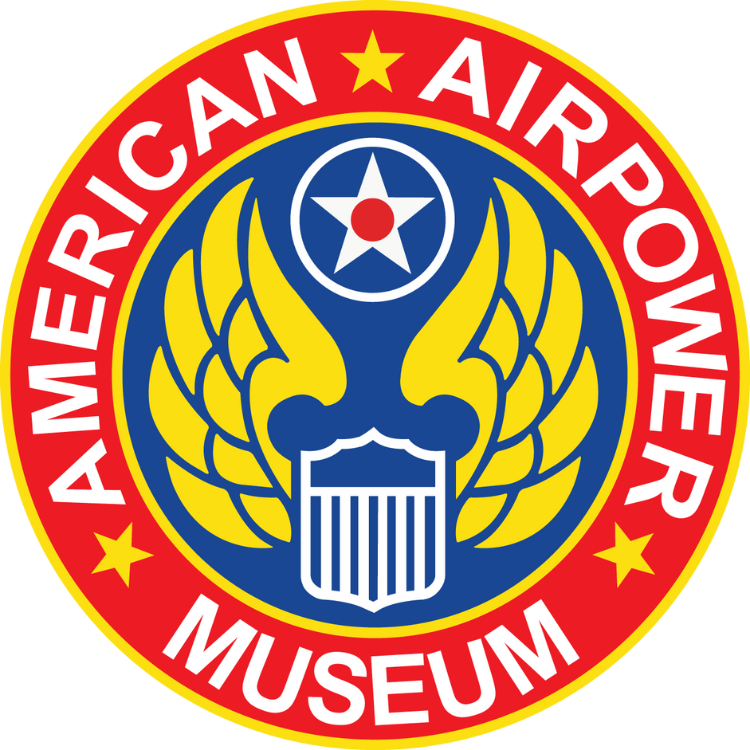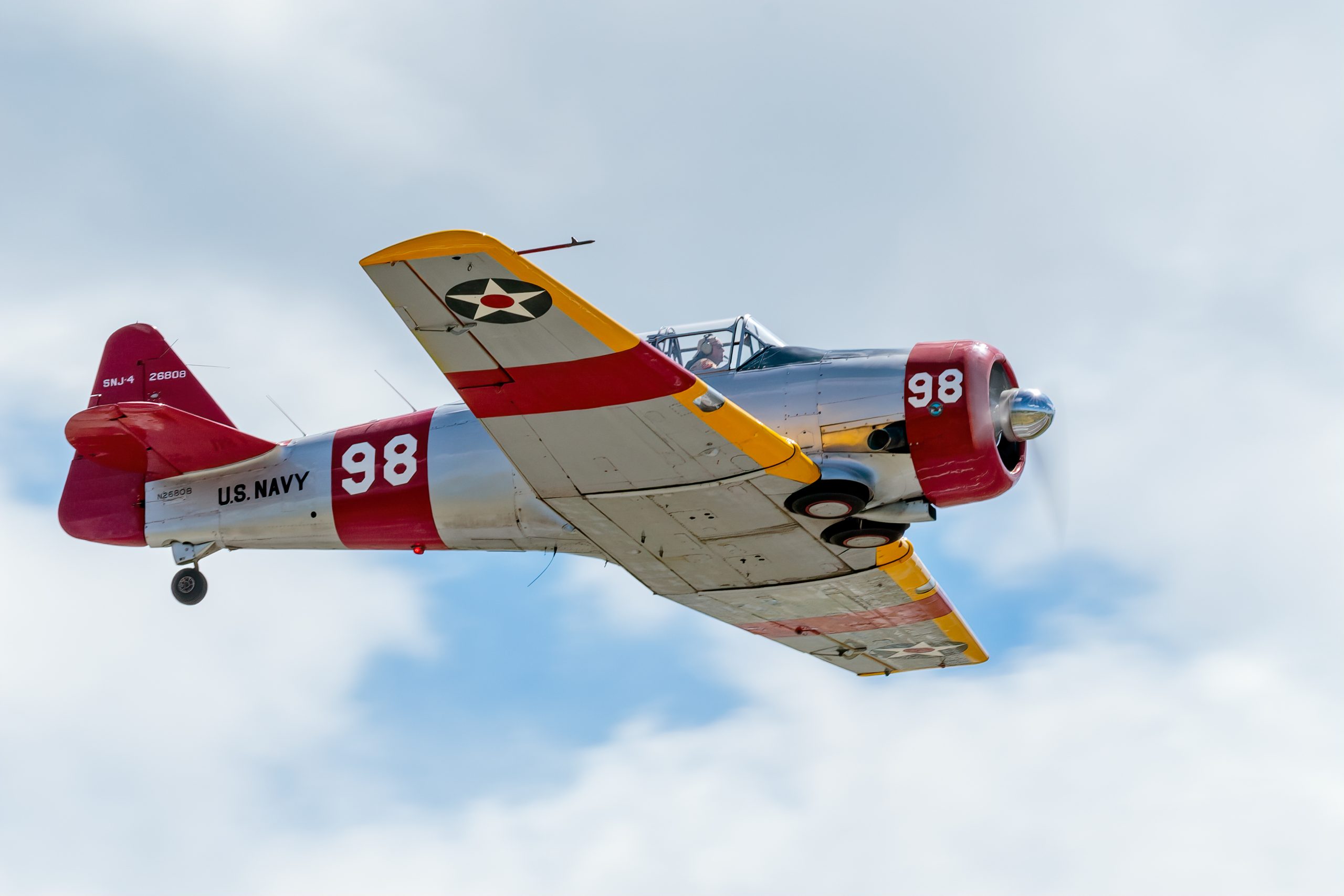Aircraft:
North American AT-6D “Texan”
Current Status:
Flyable
History:
The North American Aviation T-6 Texan was an all-metal single-engine aircraft used to train pilots of the United States Army Air Forces, United States Navy, Royal Air Force, and other air forces of the British Commonwealth from the 1930s through the 1950s. Designed by North American Aviation, the T-6 is known by a variety of designations depending on the model and operating air force. The USAAC designated it as the AT-6, the United States Navy the SNJ, and British Commonwealth air forces, the Harvard, the name it is best known by outside of the United States. The Texan originated from the North American NA-16 prototype (first flown on April 1, 1935) which, modified as the NA-26, was submitted as an entry for a USAAC “Basic Combat” aircraft competition in March, 1937. The first model went into production and 180 were supplied to the USAAC as the BC-1 and 400 to the RAF as the Harvard I. The US Navy received 16 modified aircraft, designated the SNJ-1, and a further 61 as the SNJ-2 with a different engine. A total of 15,495 T-6s of all variants were built. During the Korean War and T-6s were pressed into service as forward air control aircraft. These aircraft were designated T-6 “Mosquitos. AT-6s would serve in the French, Portuguese, and the South African Air Forces seeing its last service in the South African Air Force in 1995.
About Our North American AT-6 “Texans”:
The American Airpower Museum Operates 2 AT-6Ds in its squadron of flyable aircraft. The Aircraft are the primary trainer, and proficiency aircraft for all warbird flight operations at the museum. The Museum also flies the AT-6s as part of its flight experience program offering Warbird Flights to the general public.


